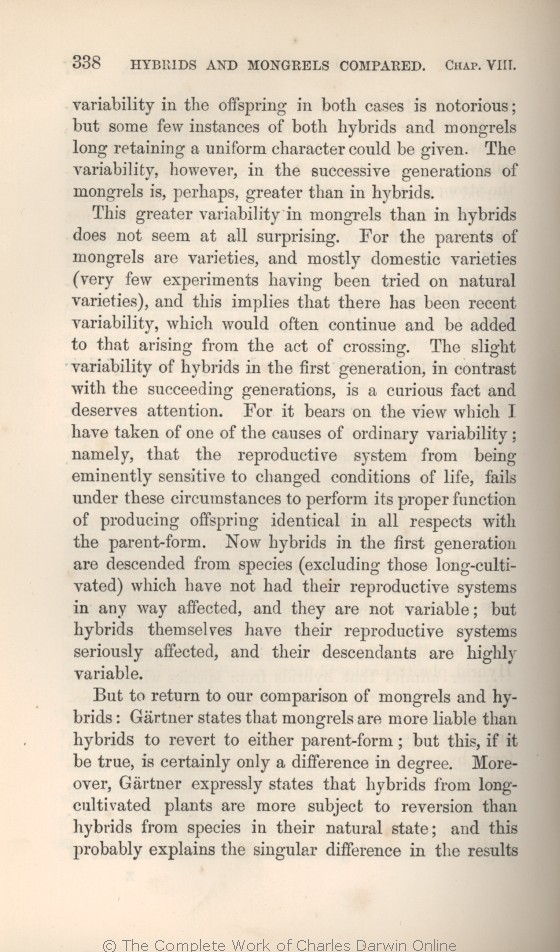variability in
the | the 1869 1872 | | their 1859 1860 1861 1866 |
| in both cases is 1869 1872 |
| is 1859 1860 1861 1866 |
| notorious; 1860 1861 1866 1869 1872 | | notori- ous; 1859 |
| instances of both 1869 1872 |
| cases both of 1859 1860 1861 1866 |
| a uniform 1869 1872 | | uniformity of 1859 1860 1861 1866 |
|
|
This greater variability
in | in 1869 1872 | | of 1859 1860 1861 1866 |
| in 1869 1872 | | of 1859 1860 1861 1866 |
| ..... 1869 1872 | | to me 1859 1860 1861 1866 |
| OMIT 1869 1872 |
| in most cases 1859 1860 1861 1866 |
| variability, 1869 1872 | | variability; 1859 1860 1861 1866 |
| which 1869 1872 |
| and therefore we might expect that such variability 1859 1860 1861 1866 |
| be added to 1869 |
| be super-added to 1859 1861 |
| be superadded to 1860 1866 |
| would augment 1872 |
| ..... 1869 1872 | | mere 1859 1860 1861 1866 |
| variability 1869 1872 | | degree 1859 1860 1861 1866 |
| hybrids 1869 1872 | | variability 1859 1860 1861 1866 |
| ..... 1869 1872 | | hybrids from 1859 1860 1861 1866 |
| OMIT 1869 1872 |
| cross or in the first 1859 1860 1861 1866 |
| OMIT 1869 |
| their extreme variability in 1859 1860 1861 1866 |
| that in 1872 |
| ..... 1869 1872 | | and corroborates 1859 1860 1861 1866 |
| of one of 1869 1872 |
| on 1859 1860 1861 1866 |
| causes 1869 1872 | | cause 1859 1860 1861 1866 |
| variability: 1869 | | variability; 1859 1860 1861 1866 1872 |
| OMIT 1869 1872 |
| it is due to 1859 1860 1861 1866 |
| from being 1869 1872 | | being 1859 1860 1861 1866 |
| ..... 1869 1872 | | any 1859 1860 1861 1866 |
| changed 1869 1872 | | change 1859 1860 1861 1866 |
| ..... 1869 1872 | | in the 1859 1860 1861 1866 |
| fails under these circumstances to perform 1869 1872 |
| being thus often rendered either impotent or at least incapable of 1859 1860 1861 1866 |
| identical in all respects with 1869 |
| identical with 1859 1860 1861 1866 |
| closely similar in all respects to 1872 |
| ..... 1869 | | long 1859 1860 1861 1866 1872 |
| long-cultivated) 1869 | | cultivated) 1859 1860 1861 1866 1872 |
|
|
But to return to our comparison of mongrels and hybrids: Gärtner states that mongrels are more liable than hybrids to revert to either parent-form; but this, if it be true, is certainly only a difference in degree. Moreover, Gärtner expressly states that hybrids from
long-cultivated | long-cultivated 1866 1869 | | long cultivated 1872 |
|









